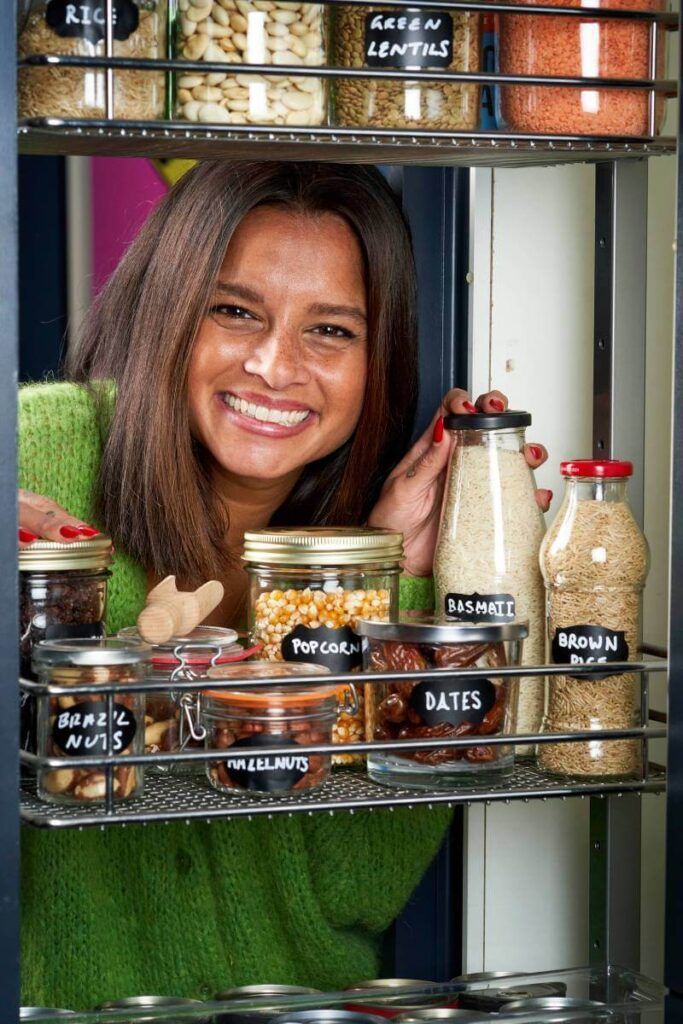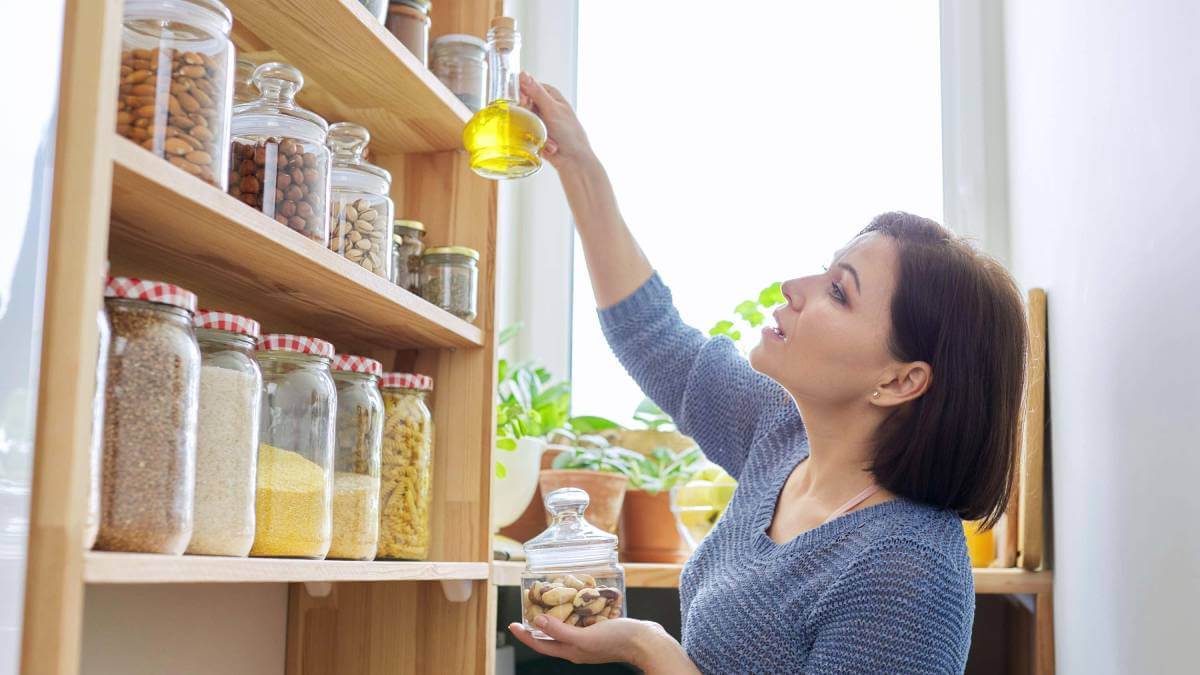Pantries have been used for food storage since medieval times, and they still have a place in many modern homes.
Victoria Beckham and Rochelle Humes are big fans, having shown off their pristine pantries on Instagram. Beckham displayed shelves of well-organised jars and bottles, while Humes captioned a picture of her immaculate shelves ‘Pantry joy’.
Dilly Carter, a professional organiser and TV presenter (dillycarter.co.uk), says a well-planned pantry makes it easier to see what to restock, and can help reduce food waste.
View this post on Instagram
Here are her tips for the perfect pantry.
Create a pantry yourself
Many houses have existing pantries, where food was stored to keep cool. But if your home doesn’t have a pantry, it’s simple to create one yourself.
“It doesn’t have to be huge. I think people have this illusion that pantries are meant to be big, walk-in things, but it could just be a cupboard with three shelves.”
“Find your biggest kitchen cupboard, and think about how you could transform it. You could make it look beautiful by using shelf risers, stackable containers, and under-shelf hanging storage, to maximise space.
“Give each shelf a purpose. For example, one shelf for breakfast items, another for dry food, such as rice and pasta. Think about the things you use the most, and position them in easy-to-reach spots,” says Ms Carter.
View this post on Instagram
Use clear containers
“If you take your store cupboard essentials out of packets and place into clear, labelled jars, you can see exactly what you have. This will reduce food waste by stopping you over-buying. Only restock once the jars are empty,” she says.
Use old jars
“You don’t have to spend a fortune on fancy storage – you can upcycle old containers, such as coffee jars or biscuit tins, to reduce waste,” Ms Carter says.
Label everything
Remember to label all your containers, either with sticky labels, a marker pen, or simply use a bit of paper and sticky tape.

Avoid single-use plastic
Everyone has a role to play in tackling plastic pollution. Thankfully, sustainable changes have now become ingrained in many people’s day-to-day routines, such as taking a reusable bag with them when they go shopping; carrying a reusable coffee cup and making purchases based on the amount – or lack of – plastic packaging.
“Small actions will add up, so I’d urge you to look for one simple change you can make that will reduce your reliance on avoidable plastic. If we are all kinder to our planet, we can help protect the environment from further harm caused by plastic pollution and leave it in a better place for future generations,” says Jessica Hickie, program manager for the Environment Agency’s plastics and sustainability team.
Save money
“At a time when money is tight, this is when we really have to be aware of what we’re buying and over-buying,” she says.
“Many of us have food waste because items go out of date. That’s why it’s good to use clear containers and labels, so you can see what you have in, and exactly what needs using.”
She adds: “It’s lovely to see a beautiful pantry with lots of matching containers, but it’s not about what it looks like, it’s about how practical it is, and how much money it’s saving you.”
Do you keep your pantry stocked up? Let us know why or why not in the comments section below.
Also read: How long do pantry staples really stay fresh?
– With PA

